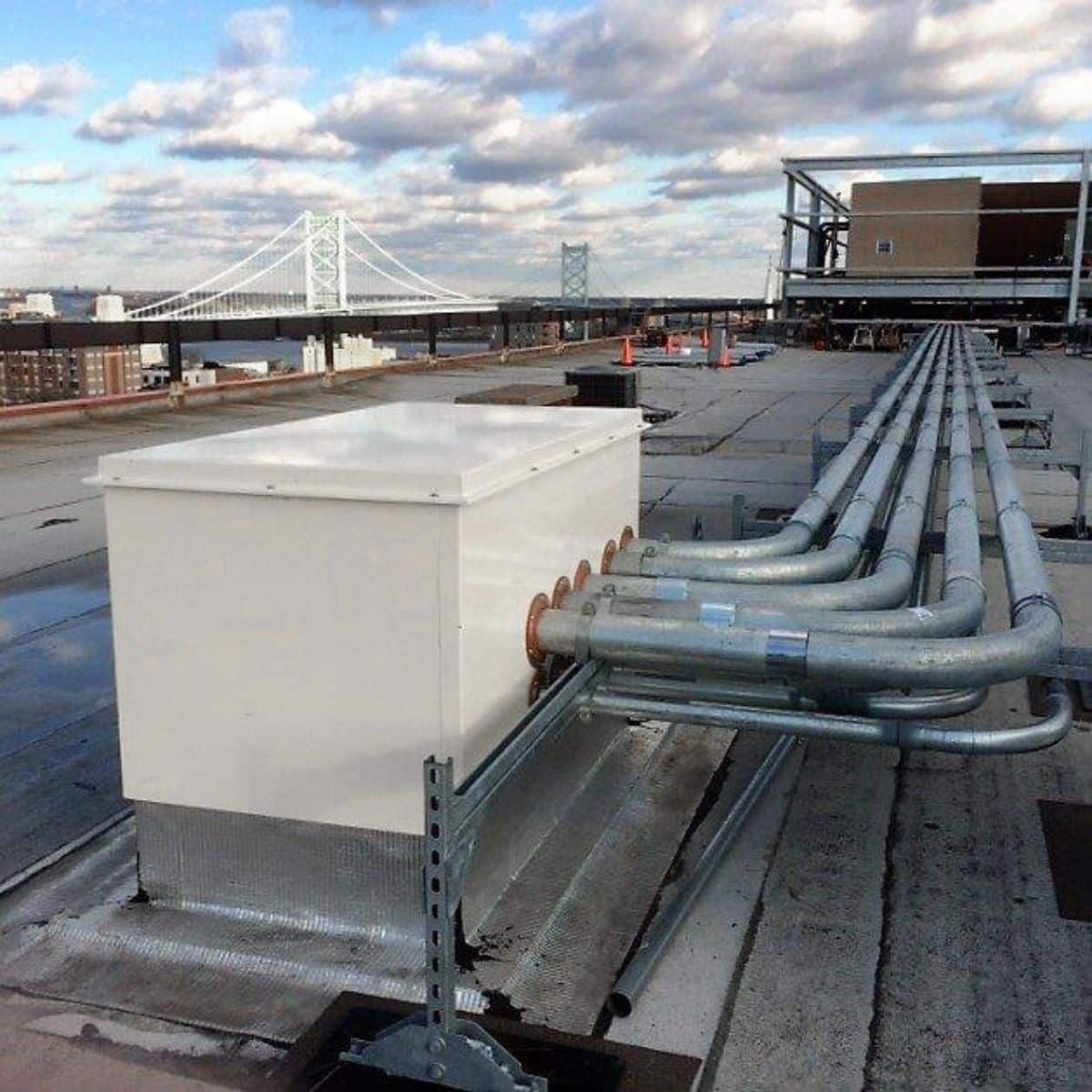
Engineers should consider more than just placement when designing penetrations for Data Centers, Advanced Facilities, Mission Critical environments, and other commercial buildings. One crucial but often overlooked factor is the direction of the penetrations. Horizontal penetrations offer better leak resistance and a more secure, long-term solution than vertical installations.
Here’s why horizontal penetrations are a smarter choice - and why we design them this way at RPH.
1. Advanced Leak Protection
Water ingress is one of the most common risks in any facility, especially where sensitive equipment is involved. Vertical penetrations are particularly vulnerable to leaks, as gravity directs water straight into the structure. Vertical penetrations, such as through walls and roofs, are primary areas for water infiltration. This is a significant concern in mission critical environments like Data Centers, where even small amounts of water can lead to costly equipment damage and downtime.
By contrast, horizontal penetrations reduce the risk of water ingress, as they don't allow direct water flow. Properly installed horizontal penetrations combined with high-performance exit seals offer greater protection against rain, wind-driven water, and pressure-related infiltration issues.
2. Enhanced Structural Stability
Horizontal penetrations distribute loads more evenly and typically require less structural reinforcement than vertical ones. Vertical penetrations are more likely to create weak points in the building’s envelope, leading to potential long-term structural issues. Horizontal installations avoid these vulnerabilities, maintaining better structural integrity over time. In addition, properly sized housings can allow for future expansion by allowing additional penetrants to be added without creating additional holes in the structure and the waterproof membrane.
3. Improved Energy Efficiency
Vertical penetrations not only pose water ingress risks but also create thermal bridges, where heat escapes through gaps. This can significantly reduce the energy efficiency of your facility. By opting for horizontal penetrations, the thermal performance of your building can improve as they minimize the potential for thermal bridges.
4. Simplified Maintenance and Accessibility
Routine maintenance is critical in minimizing downtime. Horizontal penetrations are often easier to access, inspect, and repair, reducing the long-term costs associated with upkeep. Vertical penetrations, especially those high up on a structure, require more effort and specialized equipment to maintain.
Optimizing Risk Management with RPH Horizontal Penetration Systems
Our horizontal penetration systems, equipped with RPH Exit seals™ and advanced technologies like VAULT® and CYCLONE®, are designed to minimize risks associated with water ingress and structural vulnerabilities. By choosing horizontal penetrations, you're addressing immediate concerns—such as water infiltration—and long-term challenges, including maintenance costs and energy efficiency. This provides architects and engineers with a more resilient, secure, and efficient solution for critical infrastructure.